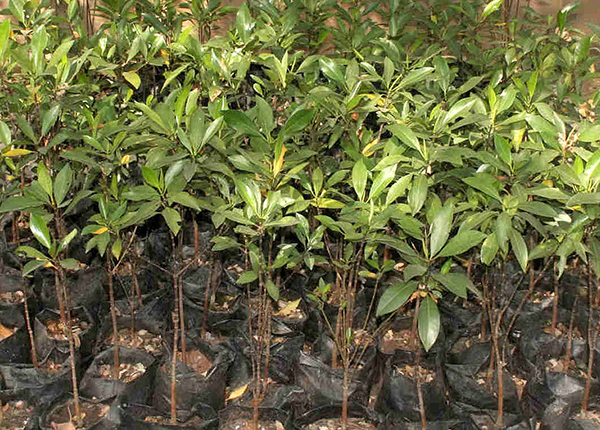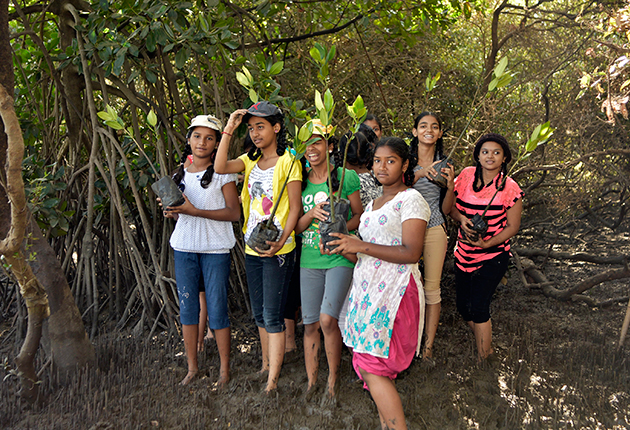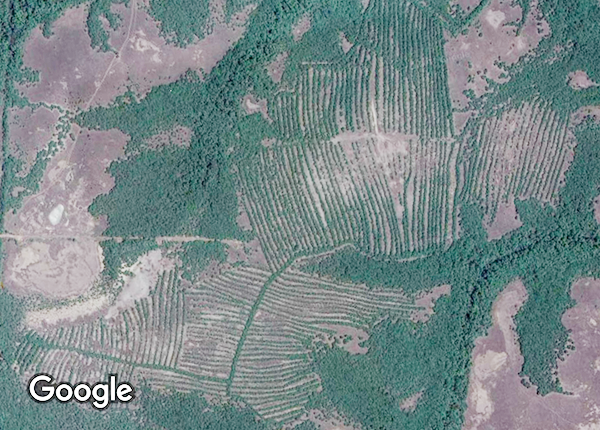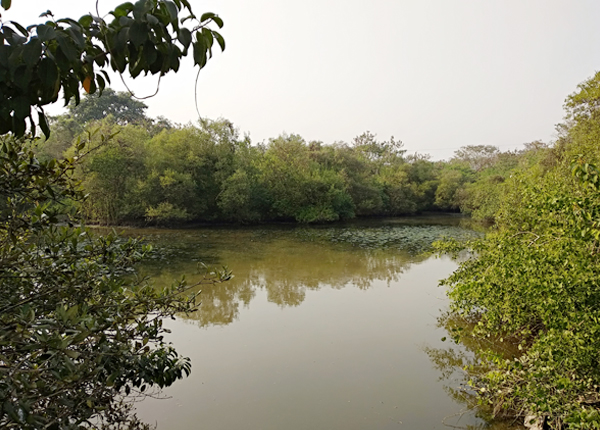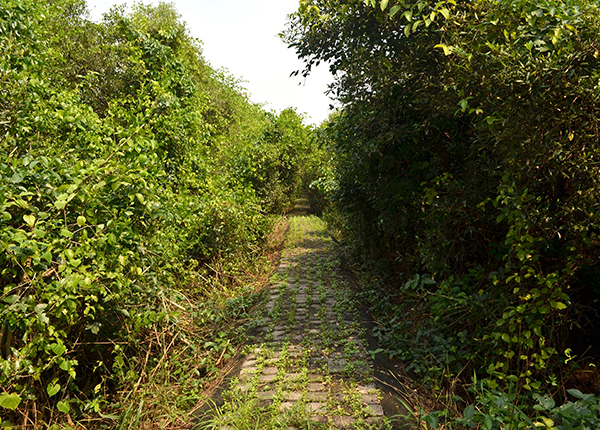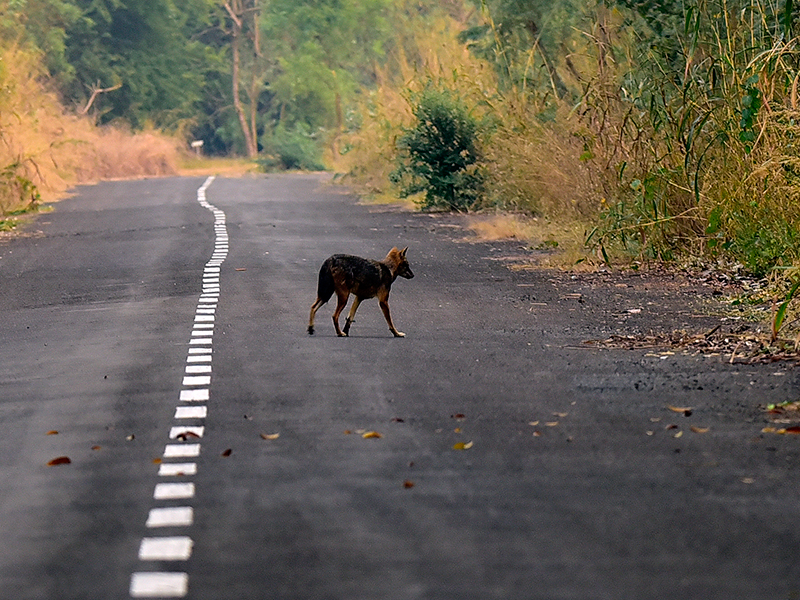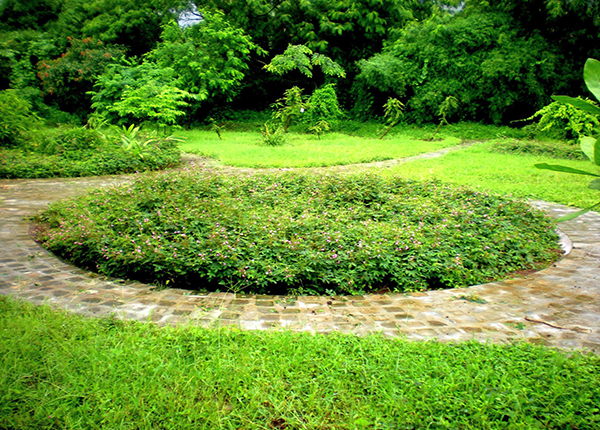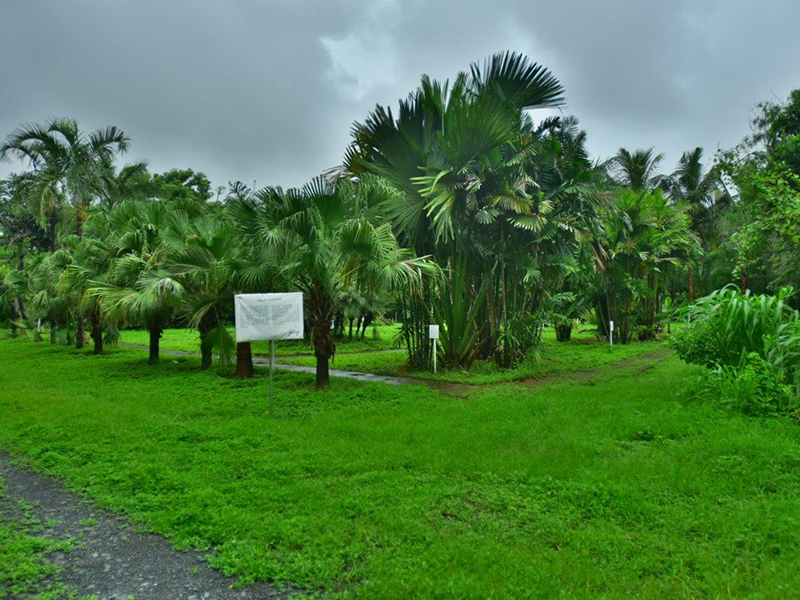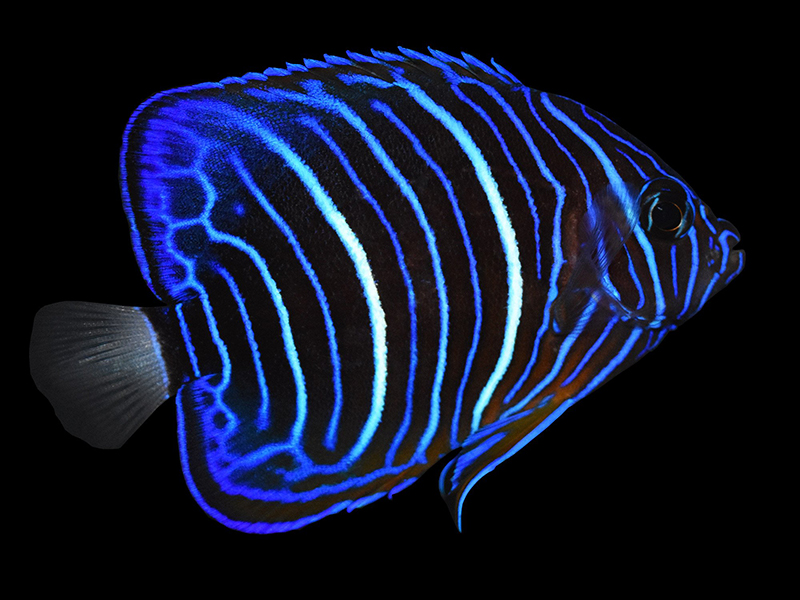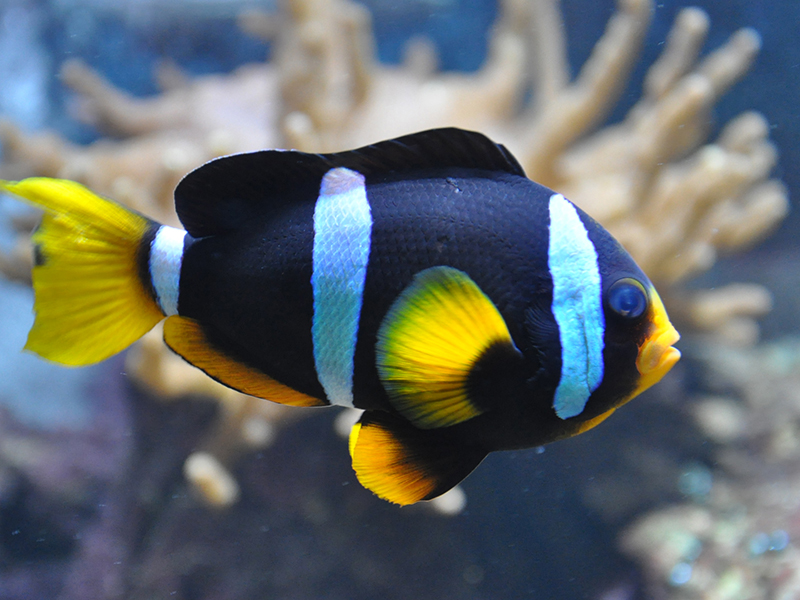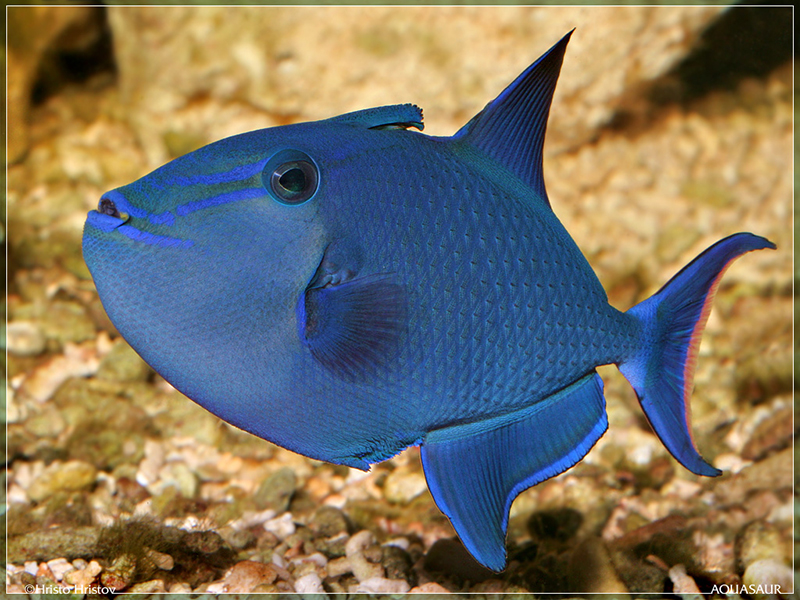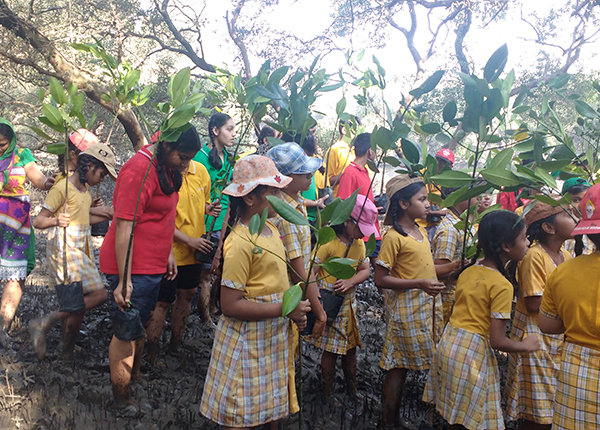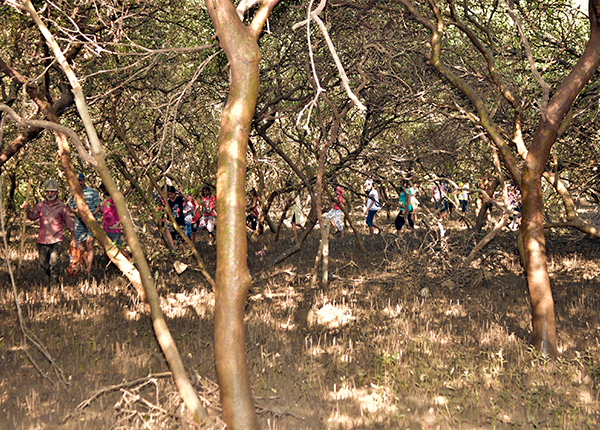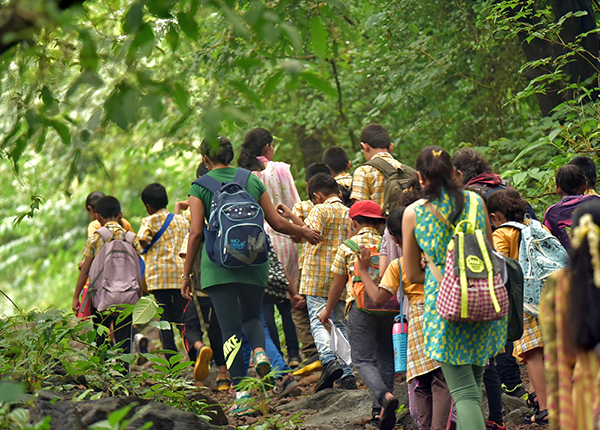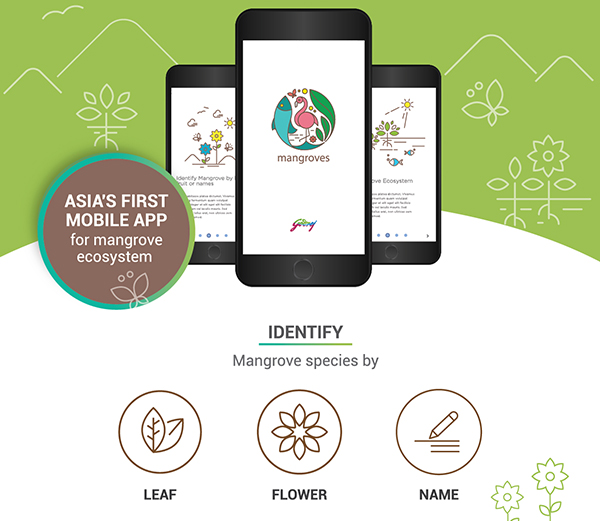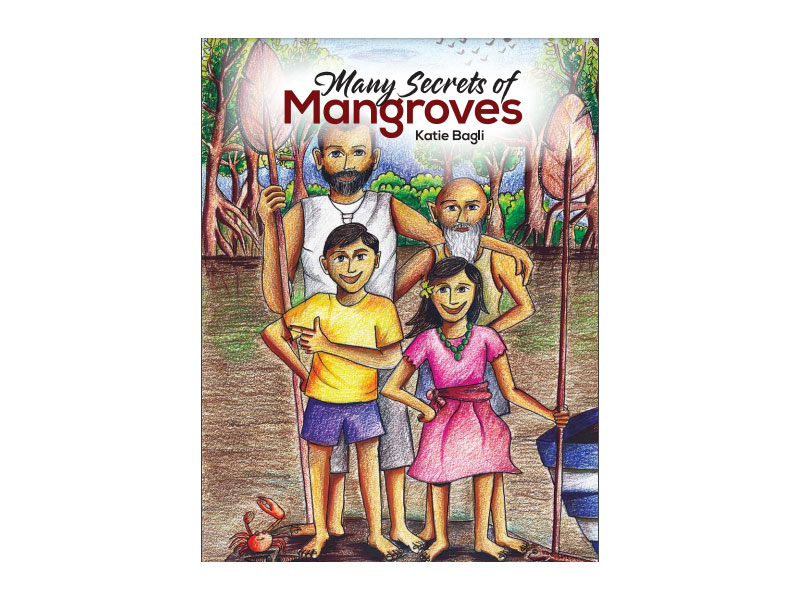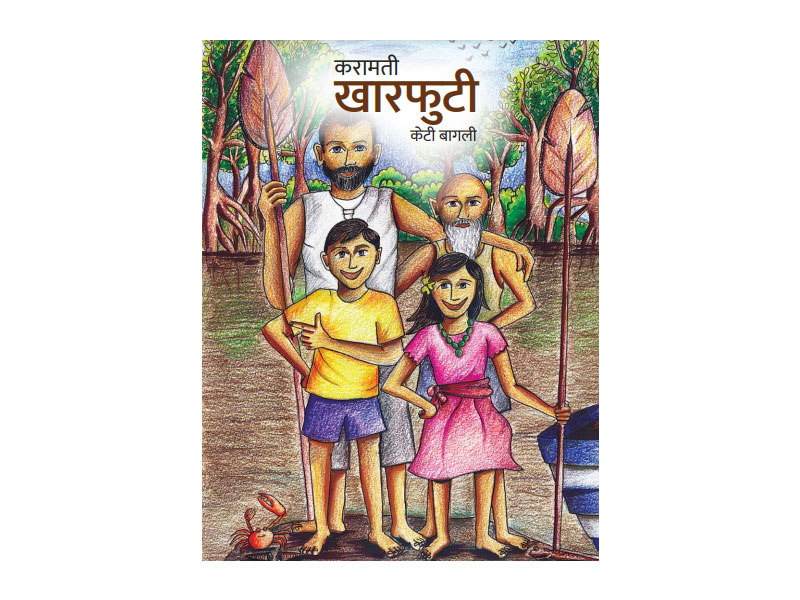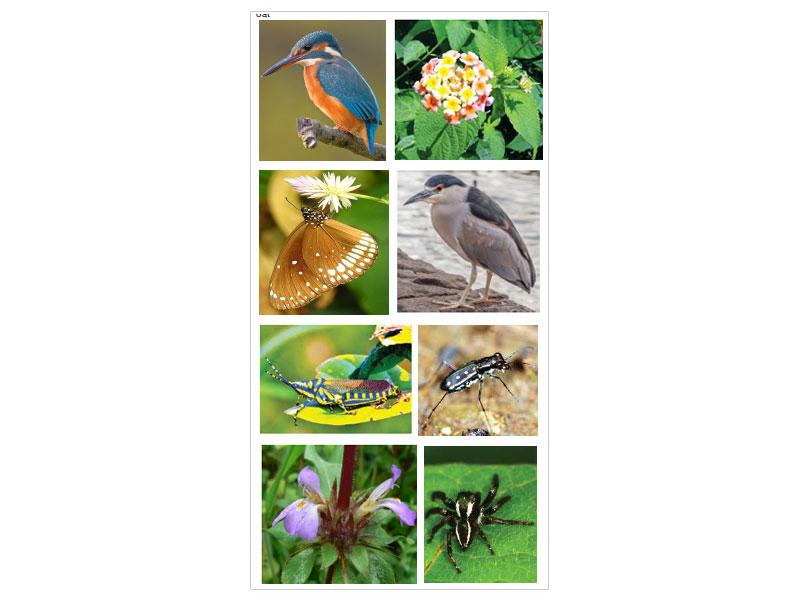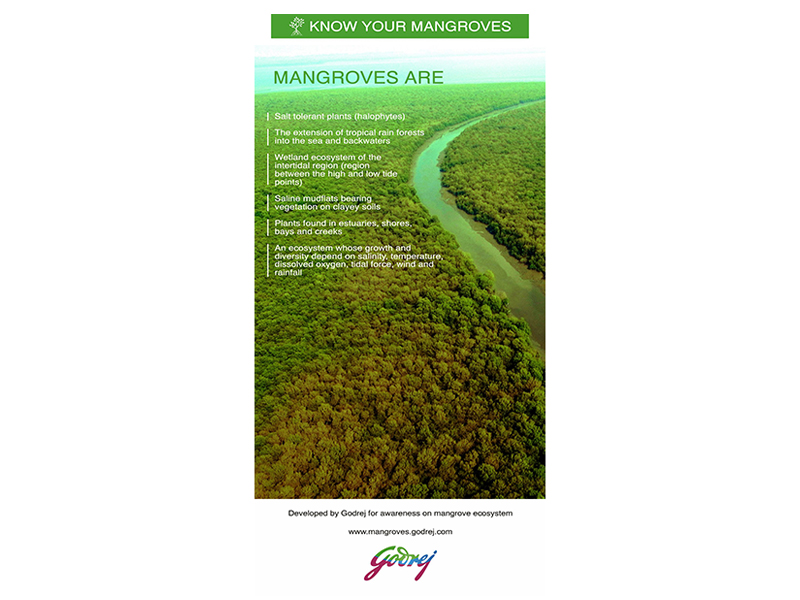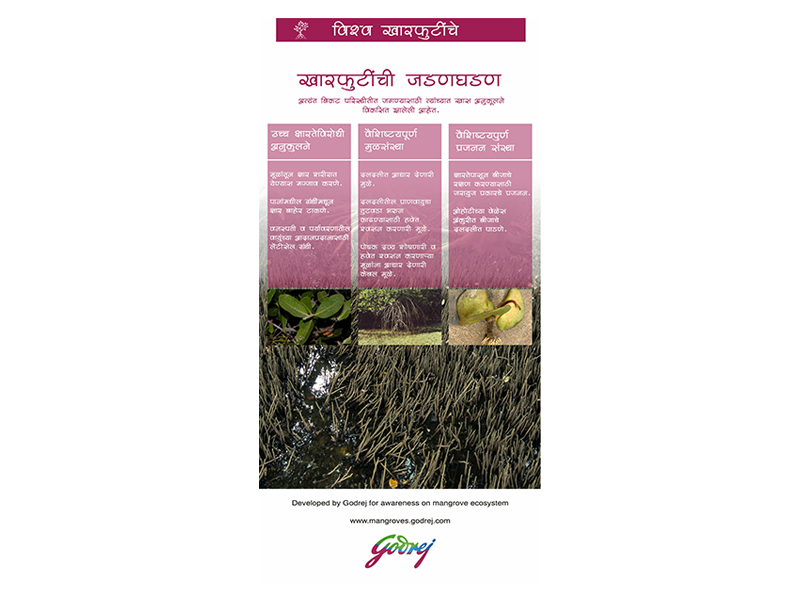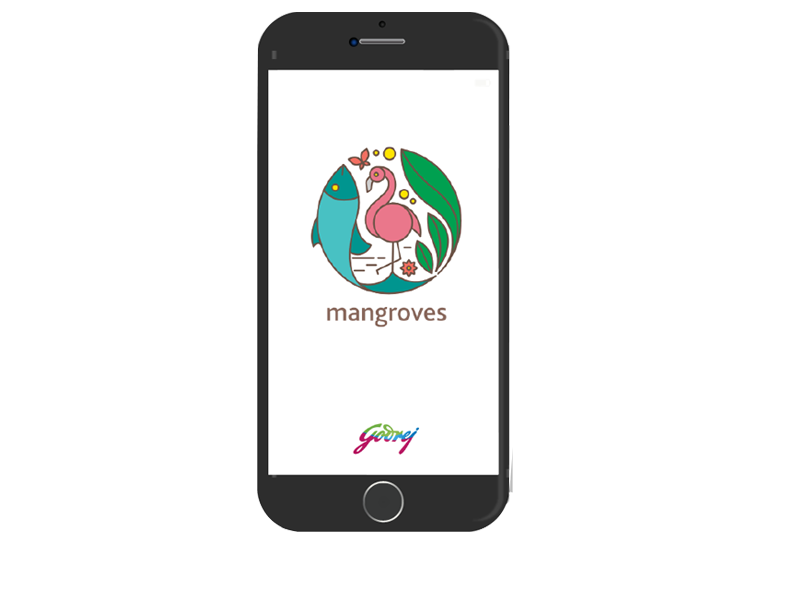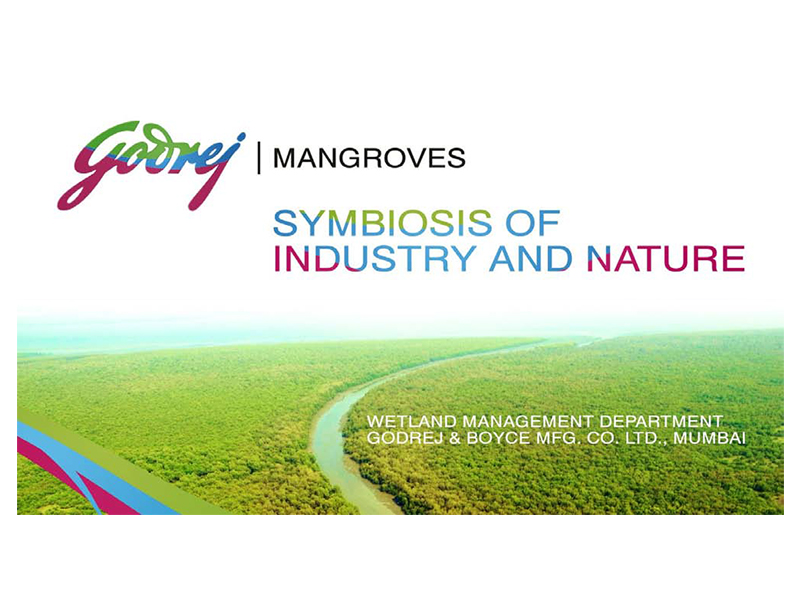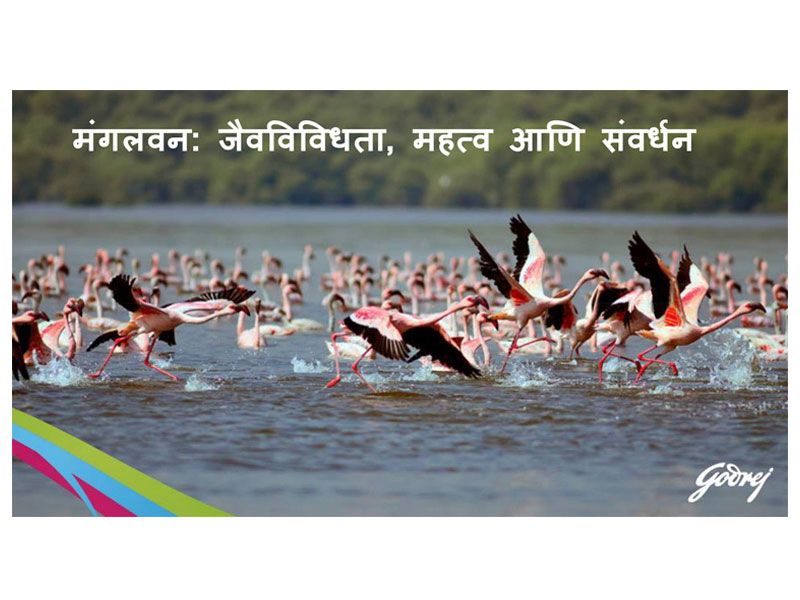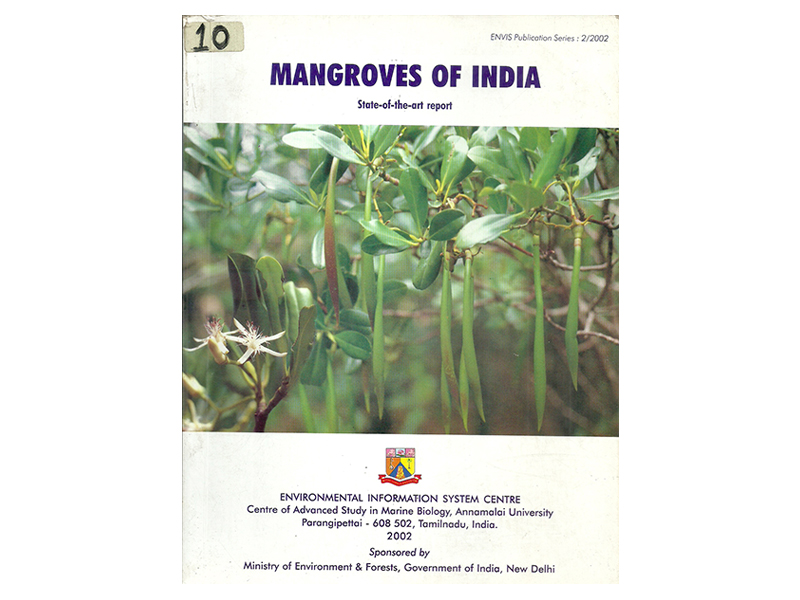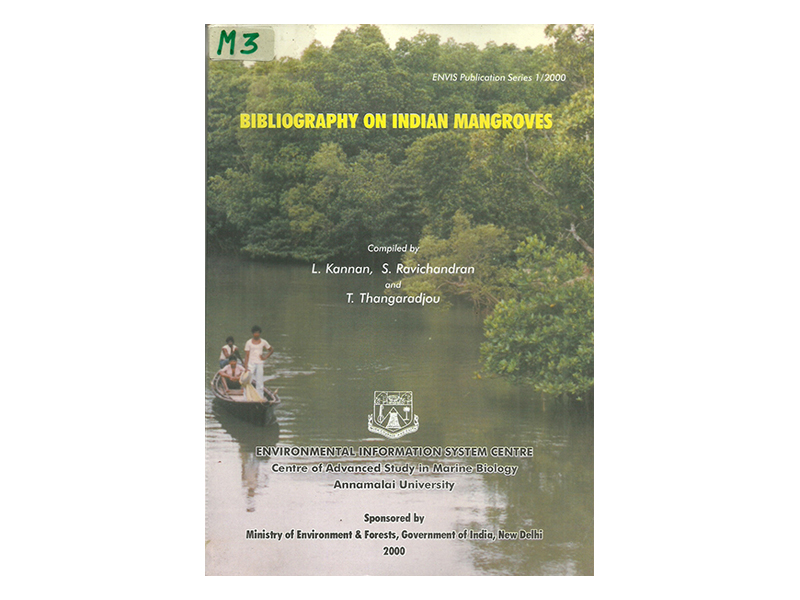Mangroves Management
The management of the mangrove ecosystem of Pirojshanagar focusses on three inter-linked components: research, conservation and awareness.
Research includes facilitation of short-term, mid-term and long-term studies undertaken by schools, undergraduate, postgraduate, doctoral college students and professional researchers.The Wetland Management Services Department facilitates research on various aspects such as species diversity, species interactions, species and ecosystem interactions, ecosystem services, threats to mangroves and role of stakeholders, ecosystem management with a focus on Pirojshanagar mangroves at Vikhroli. We welcome emerging subjects as well. We partner with research and academic institutes forshort, mid and long term studies. The reports of previous research are available for reference at our office. Write to us at mangroves@godrej.com to find out more.
Summary of projects
A short summary of select few research projects conducted at Godrej is provided below for reference:
Screening, optimization and applications of the industrially important enzymes produced by Mangrove endophytes
Author
Ms. Darshana P Sapkal
Year
2015 - 2016
University
Ramnarain Ruia College (Masters of Science, Microbiology)
Aim
Screening, optimization and applications of the industrially important enzymes produced by mangrove endophytes
Summary
The present study was carried out to determine the enzymatic potential of bacterial endophytes isolated from the leaves of different mangrove species. The nine isolated bacterial endophytes were screened for their enzymatic potential and the endophyte synthesizing maximum number of enzymes was selected and used further for the production of carboxymethyl cellulose and pectinase. It was observed that temperature, pH of the medium and incubation temperature had significant effect on the CMCase and peptinase synthesis. The interactions between temperature and pH also excerted momentous impact on the enzyme production.
The optimum conditions forCMCase and pectinase production by bacterial endophyte was determined in this study. It was observed that CMCase production was maximum at 50°C and pH 6. For the production of pectinase the optimum temperature and pH was found to be 31°C and 8 respectively. To measure the CMCase activity, filter paper assay was carried out. Although the filter paper assay differs from the other enzyme assays, a significant CMCase activity was observed at 50°C.
Pectin was extracted from apple by blanching and filtration. The presence of pectin was confirmed by addition of the pectin extract to 70% ethanol. The production of clots confirmed the presence of pectin in the extract. The production of galactouronic acid on treatment with this pectin extract was estimated by DNS method. It was observed that temperature, pH and substrate concentration greatly affected the pectinase activity. The optimum pH and temperature was found to be 8 and 50°C.
The effect of pectinase and pectinase-cellulase in combination on the yield of fruit juice was determined. It was observed that on treatment with pectinase the fruit juice yield increased compared to the counterpart. Moreover, the treatment of the fruit with a combination of cellulose and pectinase significantly increased the yield. Thus, the treatment with a combination of both pectinase and cellulose was more effective than the treatment with pectinase alone
Phytochemical extraction and pharmacological and antimicrobial studies of stem, roots and leaves of mangrove plants
Author
Abhijit Kulkarni
Year
2014 - 2015
University
Ramnarian Ruia College(Masters of Science, Microbiology)
Aim
To study phytochemical extraction and pharmacological and antimicrobial studies of stem, roots and leaves of mangrove plants.
Summary
From the present study on the mangrove plants of Rhizophora apiculata and Avicennia marina characterization and applications were done and confirmatory results were observed. First sohexlet extraction of the stem roots and leaves was done and all the extracts were obtained with high efficiency. Agar cup diffusion was done against Eschereichia coli, Staphylococcus aureus, Candidaalbicans and Aspergillus niger. Appreciable and consistent zone of inhibition was seen for all the extracts but especially for the roots and leaves of Rhizophora apiculata and leaves of Avicennia marina. None of the extracts showed any zone of inhibition against Aspergillus niger which shows the inaction of these secondary metabolites against this fungal organism. From the literature it was seen that Rhizophoraapiculata contains triterpenoids and Avicennia marina contains quinones. From the minimum inhibitory concentration it can be concluded that roots of Rhizophora apiculata showed the heighest inhibitory activity against Escherichia coli, Staphylococcus aureus and Candida abicans with the concentrations of 5mg/ml, 6mg/ml and 7mg/ml respectively. The roots of Rhizophora apiculata has the maximum amount of triterpenoids which shows most potent anti-bacterial and anti-fungal activity. Avicennia marina showed the the presence of quinones which was confirmed by red coloration. TLC analysis of the phytochemicals was done to determine the Rf values for different extracts which was determined to be 0.33 and 0.23 respectively. From the HP-TLC techniques it can be proventhat three bands consequently represents the presence of three triterpenoids Taraxerolcareborin, pyrethrin and taraxyl cis-p-hydroxycinmate which are found in the roots and leaves of Rhizophora apiculataand Avicennia marina. The reason for the presence of secondary metabolites in the roots of Rhizophora apiculata could be the abiotic and biotic stress the roots are accustomed to where the phytochemicals play an important role. The antioxidant activity (free radical scavenging activity) of the extracts of roots and leaves of all the extracts seen in appreciable amount in all the concentrations but comparatively leaves of Avicenniamarina showed less antioxidant activity from the other extracts. The cytotoxic activity plays an important role in determining the permissible dose of the concentrations of the extracts. The cytotoxic activity i.e the IC50 value was found to be 5.71 for the leaves of Avicennia marina. For the remaining of the extracts the cytotoxic activity couldn’t be determined as the pigmentation of the extracts of roots and leaves of Rhizophora apiculata was interfering in the absorbance.
Insect biodiversity at mangrove ecosystem
Author
Bhagyashree Grampurohit
Year
2013 - 2014
University
K J Somaiya College (Masters of science, Environmental Science)
Aim
Study the insect Biodiversity in SPGMEC
Summary
A lot of attention is being paid to the study of biodiversity has led to increasing interest in assessing the diversity of insects because this group dominates terrestrial and freshwater ecosystem and are valuable indicators of the health of these ecosystems. Presence of insects in the mangrove ecosystem is of importance because they feed, reproduce on plants and help in pollination. Certain level of natural damage caused by pest insects is of ecological significance in mangroves ecosystem. Study of insect biodiversity is useful in managing the forest resources. The study area selected for this research project is a private land owned by Godrej and Boyce Mfg.Co.Ltd located along the eastern express highway at Vikhroli, Mumbai. This land is covered with mangrove forests. Total 11 sites were selected randomly so as to cover maximum area of mangrove forest. At each site, during low tide, different insects were observed and photographed. Photoessay of these insects was prepared. Diversity index, evenness indices and dominance index was calculated. As per the results, Shannon index is 0.4, Simphon’s diversity index is 0.93 and evenness index is 0.1. Species richness index is 1.94. The result shows that the study location being industrial area of Mumbai, the insect diversity is less but there is a natural balance of damage and reproduction. The present research paper highlights the need of conservation of floral and faunal biodiversity to preserve the natural balance of the ecosystem.
Pest incidence of Hyblaea puera, in Vikhroli mangroves
Author
Divya Vithal Suvarna
Year
2009 - 2010
University
Institute Of Science (Masters of Science, Environmental Science)
Aim
Study the ecological role played by the pest Hyblaea puera on mangrove vegetation and impact of the pest Hyblaea on mangroves.
Summary
Mangrove are one of the natural resources which are depleting day by day. Mangroves act as buffer between land and sea. They reduce wave energy as wave travel through them. Thus mangroves are used to protect bunds from eroding. But now-a-days mangrove habitats are been converted for urban and industrial development, commonly for housing, tourist facilities, airports etc. Apart from human destruction mangroves are destroyed naturally also i.e due to pest, to study the impact of destruction caused to mangroves due to pest the following study was carried out. In the present study it was found that the attack of the pest was registered maximum in the month of October. Though the study focuses on the destruction of mangroves due to pest still attack of pest on mangroves have some positive impact on mangrove vegetation.
Impact of Interpretation Centre on mangrove conservation
Author
Preeti ShirishVirkar
Year
2009
University
University of Pune (Masters of Science, Environmental Science)
Aim
To assess the impact of Interpretation Centres on mangrove conservation.
Summary
The entire study was carried out to find the impacts of the interpretation centre on the mangrove conservation. The study consisted of Survey and Recommendations from certain guidelines. Preliminary data was collected by framing a questionnaire and targeting school students, professionals and professional engineers about the questions. The secondary data was collected from the previous data of the mangrove interpretation centre collected in the form of feedback forms. The observations from the evaluation of feedback forms were useful to come up with the results. The need of the hour is to have Interpretation centres which will at its maximum possible level sensitize the visitors visiting it and may influence at least a few to take action and communicate the message to the rest of the mass for a sound future. From the present study it was simple to come to certain conclusion and an attempt has been made to give possible suggestions received from visitors, NGOs.
Mangrove environment in Malad/Manori creek
Author
Meenakshi Malik
Year
2007
University
Sikkim Manipal University (Masters of Science, Ecology and Environment)
Aim
Study the mangrove environment in Malad/Manori creek
Summary
The area of study was Manori creek, Malad. The area did not see any flooding during July 2005 deluge. This proves the role of mangroves as the flood buffers. But there were residential areas in Malad that had to face the hardships of water logging in the areas were the land had been reclaimed by chopping the mangroves. This project studies the mangrove environment of the Malad creek also called Manori creek. It is a creek in North Mumbai, India. This study aims to study the species of Mangroves dominant in the study area and the type of fauna found at this place. The project also assesses the present status of mangroves through the photo documentation made over a period of time. The level of awareness in the local residents and the fishermen community about mangroves would also be studied by means of the questionnaire. Various experiments both to study flora and fauna can prove the intensity of degradation of the mangrove ecosystem. Along with the experiments the public survey would also reveal the effects of the denudation of mangroves on the local people and fisherman folk. Also it is high time to generate social awareness regarding mangrove conservation strategies with local people’s participation, by strict implementation of laws etc.
Evaluation of antibacterial efficacy of secondary metabolites from mangroves
Author
Mr. Srinivasan Ramakrishnan
Year
2006 - 2007
University
Vivekanand Education Society (Masters of Science, Microbiology)
Aim
To evaluate the antibacterial efficacy of secondary metabolites produced by mangroves.
Summary
Three mangrove plants Avicennia marina, Salvadora persica and Acanthus ilicifolius were analysed for their antibacterial potential. Stem and leaf extracts of the plants were prepared using acetone, alcohol and water. The activity of these extracts against four human pathogens, six fruit and vegetable spoilage causing organisms, two phenol degraders and one namely Avicennia marina stem acetone extract and Acanthus leaf alcohol extract were found to possess high antibacterial efficacy. Effect of presence of Cacl2 and MgSO4 reduced the activity of the extracts considerably with the former being more effective.
Socio- Economic assessment of mangroves at Carter Road, Bandra
Author
Mr Jobi Cherian
Year
2006 - 2007
University
Bharati Vidyapeeth Institute of Environment Education and Research (Masters in Environmental Science, Environmental Science)
Aim
To assess the status of mangrove ecosystem of Carter road and level of social awareness amongst neighbouring communities regarding the mangroves
Summary
The study was carried out to document flora and fauna in the area and to create awareness amongst the residents regarding mangrove ecosystem. The floral vegetation was sampled by the quadrant method by taking 10m x 10m quadrants. Once the data was collected the frequency, density, abundance and dominance were calculated. The faunal biodiversity was measured using quadrant method by taking 1m x 1m quadrants. Interviews were also conducted with the localities. These interviews were conducted 2ce, before the awareness program and after the awareness program. The study concluded that the area is home to 5 different species of mangrove plants and a mangrove associate i.e Avicennia marina, Avicennia marina acutissima, Sonneratia griffthi, Rhizophora mucronata, Sonneratia apatala and Acanthus illicifolious respectively. Amongst the people residing in the area 80% are fishermen and 20% are labours. Many few people are aware of the plants and the importance of the plants. There are sewers being emptied in the creek area. An awareness was created amongst people regarding the significance of these plants and strategies are being applied for their conservation.
Study of flora, intertidal microbenthic fauna and fishery of Ulhas river estuary and thane creek to assess the pollution status and decide mitigation strategy
Author
Dr N N Patil, Mrs M U Borkar, Dr Goldin Quadros, Dr V U Somani
Year
2003
University
B N Bandodkar college of Science (Dept. of Zoology)
Aim
To assess the recent status of pollution in Thane creek and Ulhas river estuary to study hydrological and sedimentological parameters, plankton, mangroves, microbenthic fauna of intertidal mudflats and fishery.
Summary
The present study was carried out to study the parameters in the Ulhas river and the Thane creek. The area was divided into 3 zones and each zone consisted of 4 study stations. This study was done by following two methods Quadrant method and Visual Estimation. A 10m x 10m to calculate the plant vegetation and visual estimation was done by using binoculars to get a rough estimate of the width of the mangrove belt, type of mangrove, damaging factor etc. a total of 13 species were found in the ecosystem. The mud burrowing animal group Polychaeta was once the dominant group in Thane which is being displaced by surface dwelling Gastropods. The types of polychaetes and their distribution in Thane creek and Ulhas river estuary are changing due to increased organic pollution, chemical pollution and changed sediment texture. The gastropod population has declined in Ulhas river Estuary and increased in Thane creek. Bivalve population has declined in the Ulhas river and in Thane creek small sized bivalve type population has increased. Both the ecosystem showed dominance of population tolerant animal group but at certain station which had proximity with major sewage reaches their number dwindled indicating deterioration beyond their tolerance.
A comparative study of different propagation method to develop a Mangrove Nursery
Author
Dr Nair, Geeta Padmakumar and Prof. Anita Madhu
Year
1994
University
Vikas college of Arts, Science and Commerce
Aim
Study the different Propogation methods to develop a Mangrove nursery
Summary
The present study was carried out tostudy the different propagation methods to develop a mangrove nursery. The study began by first studying the mangrove and its associate plants along the Ulhasriver and Thane creek. Then for the present study four species were selected namely Sonneratia, Avicennia, Ceriops and Brugeria. Out of the four species the stem of three species i.eAvicennia, Sonneratia and Ceriops and the propagules of Rhizophora were collected, treated and planted. After a duration of 2-3 weeks the stems of Avicennia, Sonneratia and Ceriops germinated with 2-3 leaves. Also the propagules of Rhizophora showed germination within 2-3 weeks. This study showed that the mangrove species will also germinate by treated stem cutting in specific conditions.
Conservation and Management of Vikhroli Mangrove Ecosystems
Author
Dr Sanjay Deshmukh
Year
1992
University
Institute of science
Aim
Restoration of a degraded mangrove swamp at Vikhroli
Summary
The study aims at standardizing a sequence of steps needed to be undertaken for methodical restoration and conservation of this unique ecosystem. The series of steps, suggested on the basis of the work carried out and presented, some of them are: understanding the importance of ecosystem on global as well as national scale, intensive study of the local mangrove ecosystem involving phytosociological studies, mapping of mangrove vegetation, tracing the relationship between the vegetation cover and physical, chemical and biological characteristic of the ecosystem, standardization of the method of restoration and involvement of the society for conservation.
Mangroves- The Natures Bank of Animals
Author
Satya Shreyas K
Year
2015
University
Reliance Foundation School (Standard 4)
Aim
Study of floral biodiversity and comparison of the well conserved and degraded mangroves.
Summary
The project started by collecting information on mangroves through various articles and websites. Two areas of Vikhroli SPGMEC mangroves and Koparkhairane mangroves were selected. The sighting of the birds was mostly in the morning and evening hours of the day. Butterflies and other insects were sighted during the noon and the reptiles and amphibians could only be sighted during the low tide when the mudflats were exposed. In Vikhroli area 29 birds, 2 reptiles, 18 insects, 2 animals were sighted and in Koparkhairane 24 birds, 3 insects and 2 amphibians were sighted. Based on this study it was concluded that a thick and well conserved mangrove forest supports a rich faunal biodiversity. Mangrove areas fast depleting in Mumbai for many anthropogenic activities and hence people should be made aware of the impacts and importance of these mangroves.
The mystic beauty of the mangroves and its aquatic birds and animals
Author
Varun Viswanath
Year
2015
University
P G Garodia School (Standard 4)
Aim
The mystic beauty of the mangroves and its aquatic birds and animals
Summary
The study area for this project covered the mangroves between Vikhroli and Bhandup. The visit to the study area was done during the low tide hours and the observations were taken. Photographs of the birds and animals that could not be identified were taken and got identified by the guide. The conclusion of my project was that the mangrove ecosystem, protected from human interference and maintaince naturally will thrive but neglecting it and using it as a dumping ground will have adverse effect not only for the mangroves and its aquatic birds and animals but for the whole of Mumbai itself.
Conservation includes on-site protection of the mangrove ecosystem by providing security to the premises, development and management of a mangrove nursery, running regular plantation programmes, development and management of educational infrastructure such as nature trails, theme gardens, a mangrove information centre, a marine aquarium and a watchtower.
Nursery and Plantations
Plantation of mangroves is conducted to ensure regeneration of green cover where it was lost due to anthropogenic disturbances. For this, a mangrove nursery of true mangrove and mangrove associate species has been developed at the creek side. These saplings are used for plantations on the Godrej campus or are provided to other organizations on request. Plantations are an effective means of engaging stakeholders in mangrove conservation. Symbolic mangrove plantations are conducted with Godrej employees, residents and other organizations to offer them a hands-on experience of the mangrove ecosystem.
Trails
Godrej has created access to peripheral areas for public awareness and education. There are five nature trails with pathways. These trails offer you a bird's eye view and very close interaction with Pirojshanagar mangroves.
Gardens
To support local biodiversity and actively engage mangrove visitors, we have developed three thematic gardens. These gardens provide boost to the food chain and in turn, the biodiversity of the mangrove area. Each garden showcase its layout and plant profiles to help visitors with necessary basic information.
Our butterfly garden has over 100 species of food and host plants to support 82 butterfly species found in Pirojshanagar. Within a few months of developing the garden, we noticed 25+ butterfly species visiting the garden. We plan to plant more species that attract butterflies in Pirojshanagar for butterfly conservation.
The medicinal garden showcases over 100 species of grasses, herbs, shrubs and trees. Their medicinal properties are mentioned in the plant profile of each species.
The palm garden has 18 species and is in the process of further augmentation. It also houses a cactarium in one section. This garden hosts a nesting colony of Baya Weaver birds every summer, a rare sight for Mumbai city.
Aquarium
Mangroves support marine biodiversity by providing food, shelter and breeding space. The marine aquarium hosts fish species found in the creeks and oceans of India. The aquarium has brief profiles on fish to increase awareness and engages children and adults alike who enjoy watching colourful marine life.
Awareness includes outdoor nature walks and indoor activities for organised groups such as schools, colleges, citizen groups, corporate employees, professional associations and others. The outdoor activities focus on plant diversity, wildlife (insects, birds etc.) photography, interactive and educational games and participatory plantations. Indoor activities include film screenings, quizzes, presentations, talks, exploring mangrove information centre and indoor games.
Mangrove walks
Wetland Management Department conducts mangrove walks though out the year for schools, colleges, NGOs and CBOs, citizen forums, corporates and any other organized groups. These walks focus on generic understanding of mangrove ecosystem or specific topics like taxonomy. We do conduct bird watching, butterfly observations, tree trais, photography walks and other programs based on visitors' interests. These programs are conducted with prior booking at no cost. Contact us on 022 6796 1097 to know more or block a date.
Mobile app
The mangrove ecosystem is vital lifeline for coastal states of India. However, awareness about it is inadequate because of its swampy nature and remote locations. One key problem in understanding mangroves is absence of popular field guide to identify mangrove species.
To overcome this challenge, Godrej has developed a mangrove mobile app to enable interested individuals and organizations for identification of mangrove plant species. The app covers 24 mangrove and mangrove associate species found in Maharashtra. The users have choice to identify the species based on leaf shape, flower color and name of the species. Besides the identification feature, the app offers other interesting information like description of every plant species and its uses. It has a separate section on mangrove ecosystem with information on mangrove distribution, mangrove, plant adaptations, faunal biodiversity in mangroves, threats , conservation measures and role of stakeholders. It helps the users with glossary of technical terms and information about Godrej mangroves. The app provides objective and subjective feedback options for users to offer suggestions for app improvement and to share relevant information. The app is available in Play Stores on Android, iOS, and Windows platforms.
The app is Asia's first mobile app for mangrove ecosystem. World's first app for mangrove ecosystem developed by a corporate. It encourages 'citizen scientist', a biodiversity conservation strategy recommended world over. The app is useful for teachers, students, researchers, Forest Department staff, NGOs-CBOs and nature enthusiasts interested in mangrove ecosystem
Awareness kit
Godrej has created access to peripheral areas for public awareness and education. There are five nature trailswith pathways. These trails offer you a bird's eye view and very close interaction with Pirojshanagar mangroves.
Library
Godrej's Mangrove Information Centre has collection of books, magazines, research reports, conference proceedings and other publications on various aspects of mangrove ecosystem. These books are available for reference at our office. Write to us at mangroves@godrej.com to find out more.


